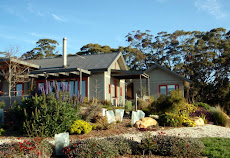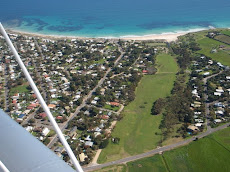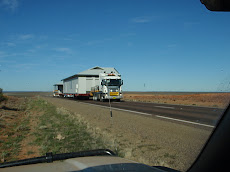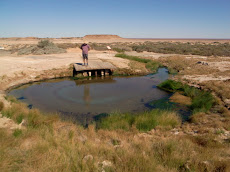At the halfway mark camped in one of the remotest parts of our journey I (Helen) am reflecting on the role and advantages or otherwise of the technology we have chosen to use on our trip. By this I mean telecommunications; the Prado obviously has its own high tech in the form of tyres plus compressor and deflator, suspension modifications, UHF radio, etc deemed essential. (Tyre pressures area very serious matter and source of much debate in all places drivers gather). Not to mention an entire industry devoted to all the tweaks possible for camper trailers and caravans. We decided to save expenditure and live without GPS (global positioning system), or an EPIRB (emergency position indicator radiating beacon!).
A satellite phone was also an expense we have so far decided against - renting for 2 months was not considerably cheaper than a purchase price of well over $2000 and nearly all routes in Australia have travellers – TCCC members will be able to imagine Jack Beach’s voice telling me “Mate, a week’s worth of baked beans, plenty of water and spare tyres will see you through – tell the police before you go and when you arrive so they know when to start looking for you”. The sat. phone issue is still being debated for the last leg – the Anne Beadell Highway across the Great Victoria Desert from WA into SA. I can see it would be worthwhile if more remote travel is on the cards, as it will be. Most desert travellers have one as mobiles certainly don’t have coverage there. We spent an afternoon at King Edward River on the Mitchell Plateau yarning to a delightful elderly Scot travelling alone (his wife had finally jacked up and bought a $1000 pup so she could stay home to see grandchildren grow) : he’d had 3 strokes and a heart attack; his daughter had bought him a sat. phone and he reported in regularly at $3.84 per 30 seconds or $2.50 per SMS.
What I am glad to have brought with us are:
1. Laptop computer. As my hand writing is so appalling I figured it would make more sense to type a diary, but guess what? I’m up to a second exercise book of day to day scribble as haulin
2. Wireless broadband. This is via a small device called a data pack which plugs into the laptop with an extra antenna if needed, and thanks to Telstra I have one with unlimited downloads to which I am addicted and eternally grateful for, not having to worry over counting megabytes while downloading all our emails and loading photos and blog updates. Turning off the very hungry auto-updates is a good idea nonetheless. A nextG mobile could also be used as a modem in a laptop. Wireless broadband is accessible in surprising places, for example sitting here halfway up the Dampier Peninsula at an Aboriginal owned and run ocean-side retreat/resort/camp called Middle Lagoon. I also saw the same operation at the community store of the remote Aboriginal community of 60 Bardi people at Lombadina yesterday. Albeit in both places connection is a bit sporadic, dropping out at inconvenient moments. And I talked to a dentist in Derby who travels the deserts as a locum and relies on laptop with wireless broadband via a modem for all his access (he also uses a sat. phone and GPS.)
Having an internet-enabled laptop enables one to avoid the hassles of searching in towns for a library or Internet cafe (and don’t get me wrong, these are essential services I and others have long argued for), to access email, pay bills, transfer money to the ever-diminishing bank account (plastic cards take a beating at $2
3. A blue tick nextG mobile phone. Telstra Countrywide kindly supplied a Country 165 model with car kit with assurances that this would give maximum coverage. And so it may - the 98.4% coverage figure used means population, not area. Any glance at the maps available on the Telstra website quite clearly show the large areas not covered by nextG which is focussed on population centres and highways. Some people still swear their older 3G mobiles still work in areas not covered by nextG. Which brings me to the inescapable conclusion that pay
Nonetheless, a mobile seems now to be an essential piece of hand luggage, and it has been a boon to be able to ring from the car to the nearest Toyota dealer to chew over a problem as we did outside Katherine, or make a booking for a service as we did outside Alice Springs, or take a photo and send to the kids via a month’s free MMS, or SMS new friends met on the road.
One of the joys of being on holiday is to switch off and forget such things as work, accounts, debates about technology, and cut off from news from the “outside world” – we have felt very little urge to read newspapers or look at online news. There is also sometimes a tension in how removed you want to feel from family and friends. On balance, I guess we are very lucky to have choices about how much or how little you engage, or do research, and what risks you take, and telecommunications remains a critical factor in all choices.

















































































































1 comment:
Whatever the technology - just done a catch up on your trip- keep it coming - we are enjoying it so much. Have been sharing your latest revelations this afternoon with a NZ friend and his wife who life in the village over a long lingering BBQ. Bex still waiting for the work permit tocome through. Love D & C xx
Post a Comment